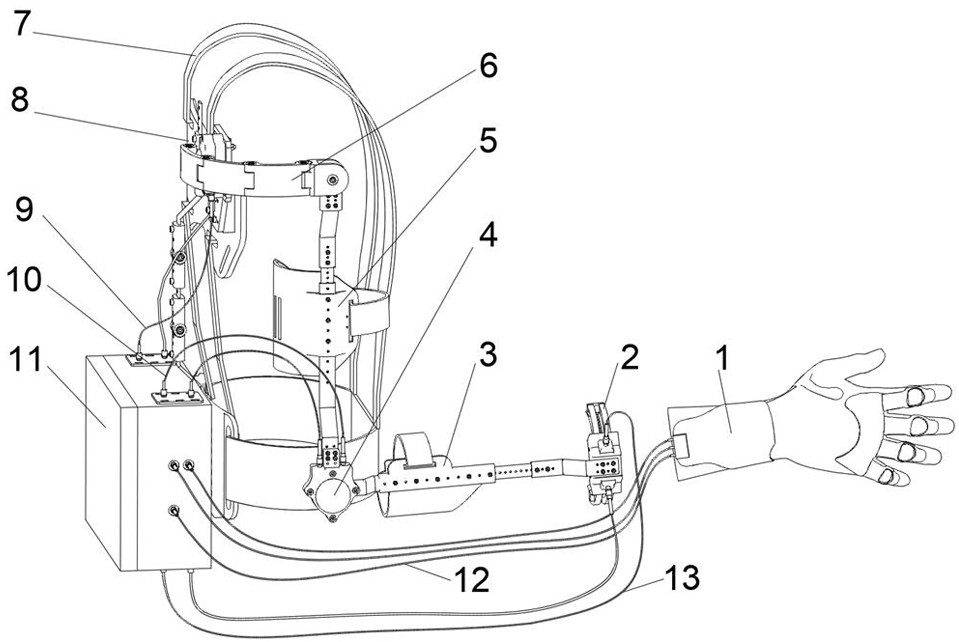Intelligent exoskeleton for rehabilitation of patients with upper limb paralysis
An exoskeleton and patient technology, applied in applications, passive exercise equipment, medical science, etc., to achieve the effect of improving wearing comfort, preventing muscle atrophy, and reducing load
- Summary
- Abstract
- Description
- Claims
- Application Information
AI Technical Summary
Problems solved by technology
Method used
Image
Examples
Embodiment Construction
[0038] preferred, such as Figure 10 As shown, in the intelligent exoskeleton control mechanism for the rehabilitation of patients with upper limb paralysis, the main control board is connected to the hand, wrist, elbow, and shoulder drive motors in turn to provide motor direction control signals and speed signals, and to receive the internal position of the motor. , speed, load, and temperature sensor feedback signals, so as to control the drive motors of each joint. The wireless communication module is used to receive signals fed back by pressure, bending, surface electromyography, and attitude sensors, and transmit signals from corresponding sensors to the main control board. Among them, the thin film pressure sensor is used to detect the force of the hand when grasping the object, the flexible bending sensor is used to detect the bending angle of the hand, the surface myoelectric sensor is used to detect the surface myoelectric signal of the patient's upper limb movement, ...
PUM
 Login to View More
Login to View More Abstract
Description
Claims
Application Information
 Login to View More
Login to View More - R&D
- Intellectual Property
- Life Sciences
- Materials
- Tech Scout
- Unparalleled Data Quality
- Higher Quality Content
- 60% Fewer Hallucinations
Browse by: Latest US Patents, China's latest patents, Technical Efficacy Thesaurus, Application Domain, Technology Topic, Popular Technical Reports.
© 2025 PatSnap. All rights reserved.Legal|Privacy policy|Modern Slavery Act Transparency Statement|Sitemap|About US| Contact US: help@patsnap.com



